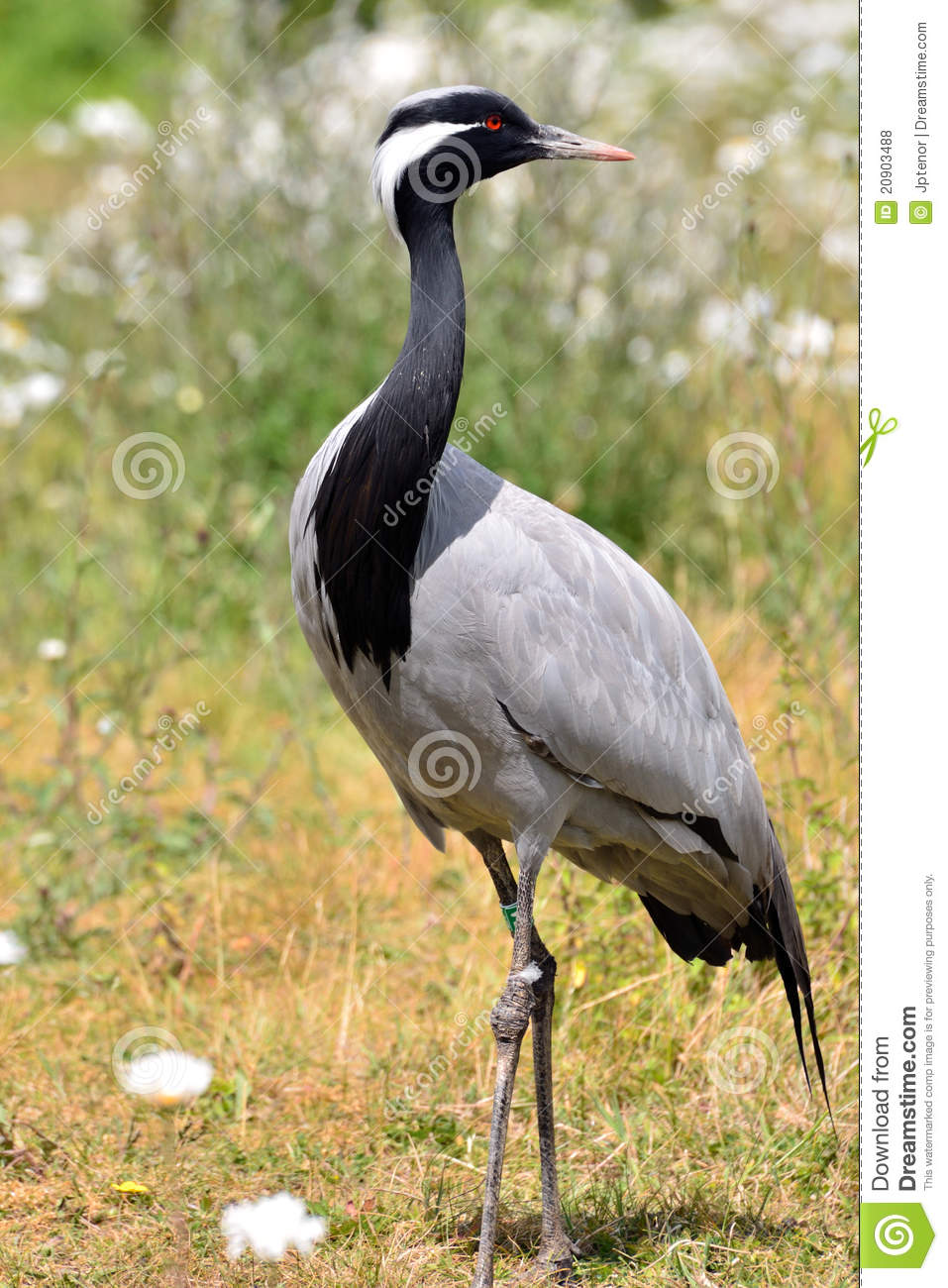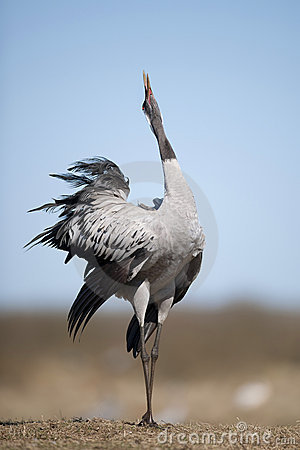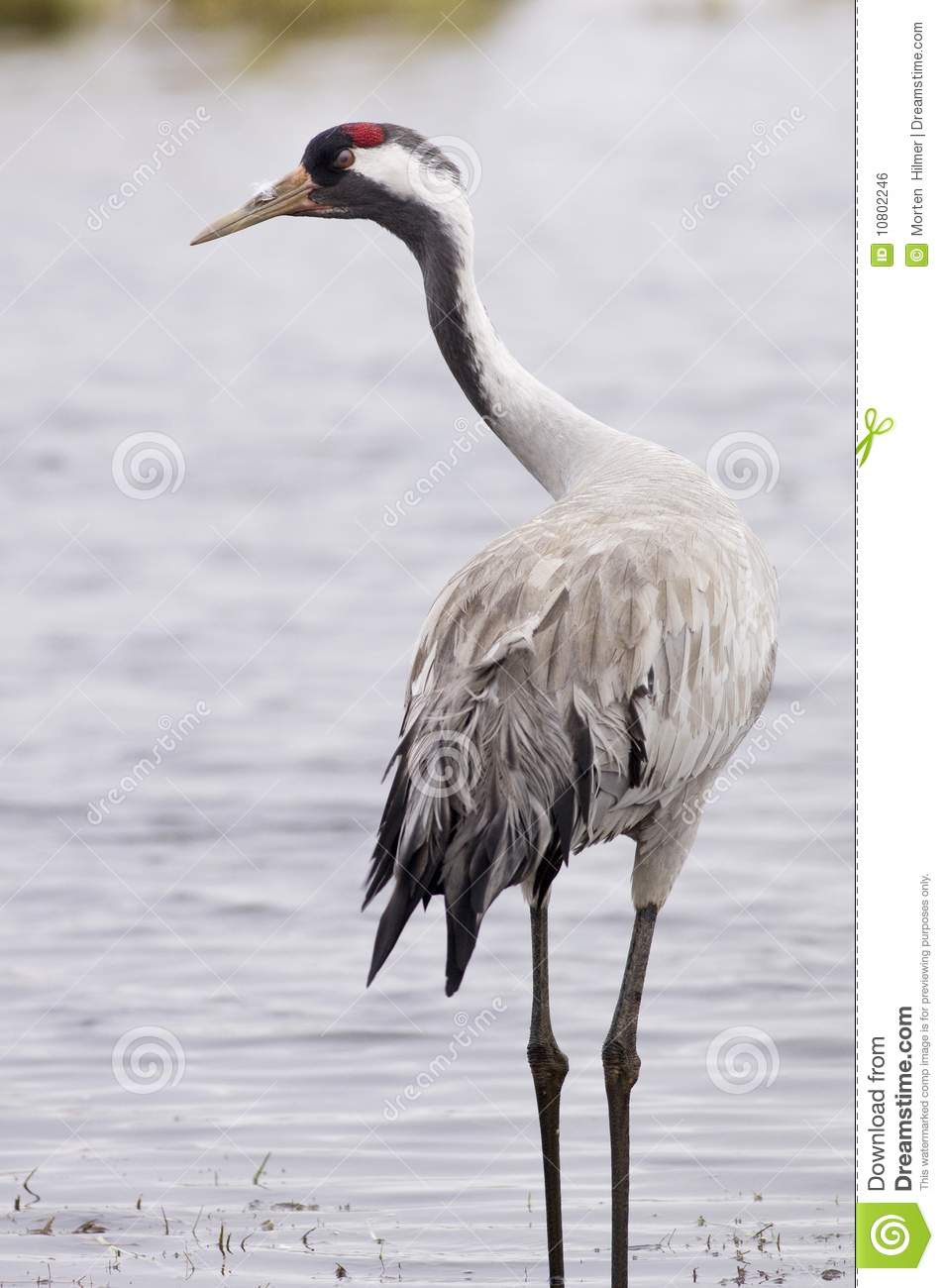
Grus grus
SUBFAMILY
Gruinae
TAXONOMY
Ardea grus Linnaeus, 1758 Sweden. Monotypic.
OTHER COMMON NAMES
English: Common crane; French: Grue cendrйe; German:
Kranich; Spanish: Grulla Comъn.
PHYSICAL CHARACTERISTICS
Height 45 in (114 cm); wingspan 71–78.7 in (180–200 cm);
weight male 11–13.4 lb (5–6.1 kg), female 10–13 lb (4.5–5.9
kg). Gray body with black primaries. Head and neck are dark
with white stripe from behind eyes down neck. Crown has red
skin patch.
DISTRIBUTION
The most widely distributed of all cranes, they occupy an
area extending across the Scandinavian countries south to
Germany and then east to eastern Russia and China. Winter
in Spain, northern Africa, the Middle East, India, Indochina,
and China.
HABITAT
Shallow wetlands. In winter range, it may forage in agricultural
fields and pastures.
BEHAVIOR
Migrates throughout Asia, Europe, and northern Africa.
FEEDING ECOLOGY AND DIET
Omnivorous, including tubers, stems, leaves, berries, and other
plant material; also invertebrates (worms and insects) and some
small vertebrates (snakes, fish, rodents).
REPRODUCTIVE BIOLOGY
Typically lays 2 eggs, incubated for 28–31 days. Chicks fledge
at 65–70 days.
CONSERVATION STATUS
Not threatened, though listed on CITES Appendix II. Its habitat
would benefit from increased protection in heavily populated
areas of Europe.
SIGNIFICANCE TO HUMANS
Their yearly return to the Scandinavian countries is heralded
as a sign of spring.
Other popular Animals
Photo Gallery of - Eurasian crane




 Animalia Life
Animalia Life